Trichrome fun: Shooting color with BnW film
Like Stereoscopy, Trichrome photography is another novel application of limited photographic technology back in the days that fell out of fashion due to invention of better technologies.
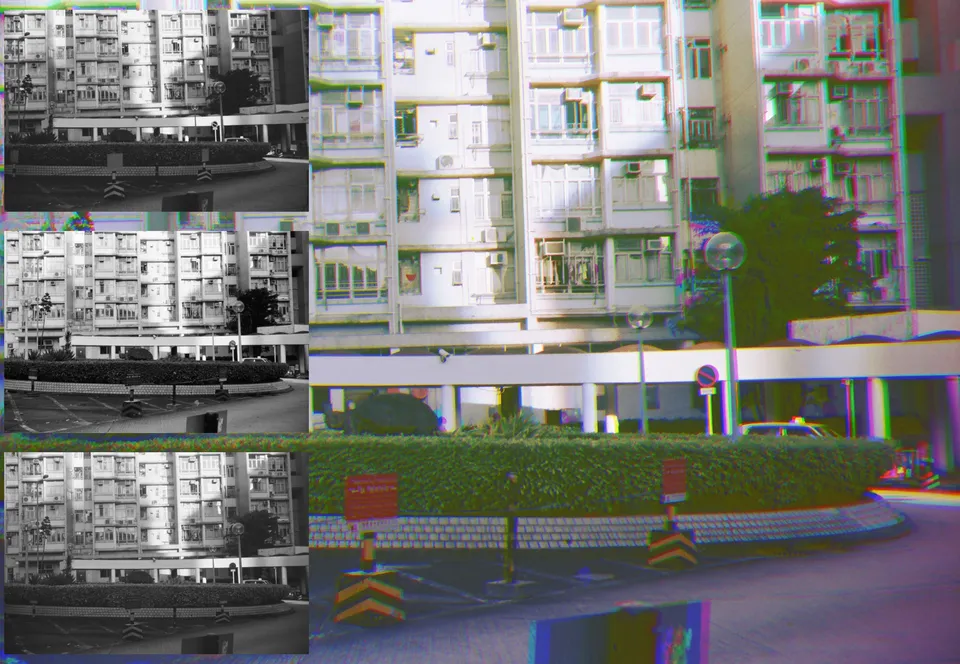
Photography was invented in the 1820s which by then was only available in black and white. An image is formed by recording intensity of lights using photosensitive chemicals. Nowadays we know a photo can be decomposed into 3 components: red, green and blue of their respective intensities. This was discovered by James Clerk Maxwell in 1855 that with 3 colored filters, it's possible to compose a color photo out of black and white images.
Color film nowadays simply have incorporated layers sensitive to different parts of the spectrum (color), which is built on top of Maxwell's finding.
With reliable color film readily available, why would someone attempt the aged method of trichrome photography?
First and the obvious, you can shoot color photo without color film.
Then you get Harris shutter effect, the kind of color fringing from misalignment of layers of movements of objects in the timeframe between each of the 3 shots.
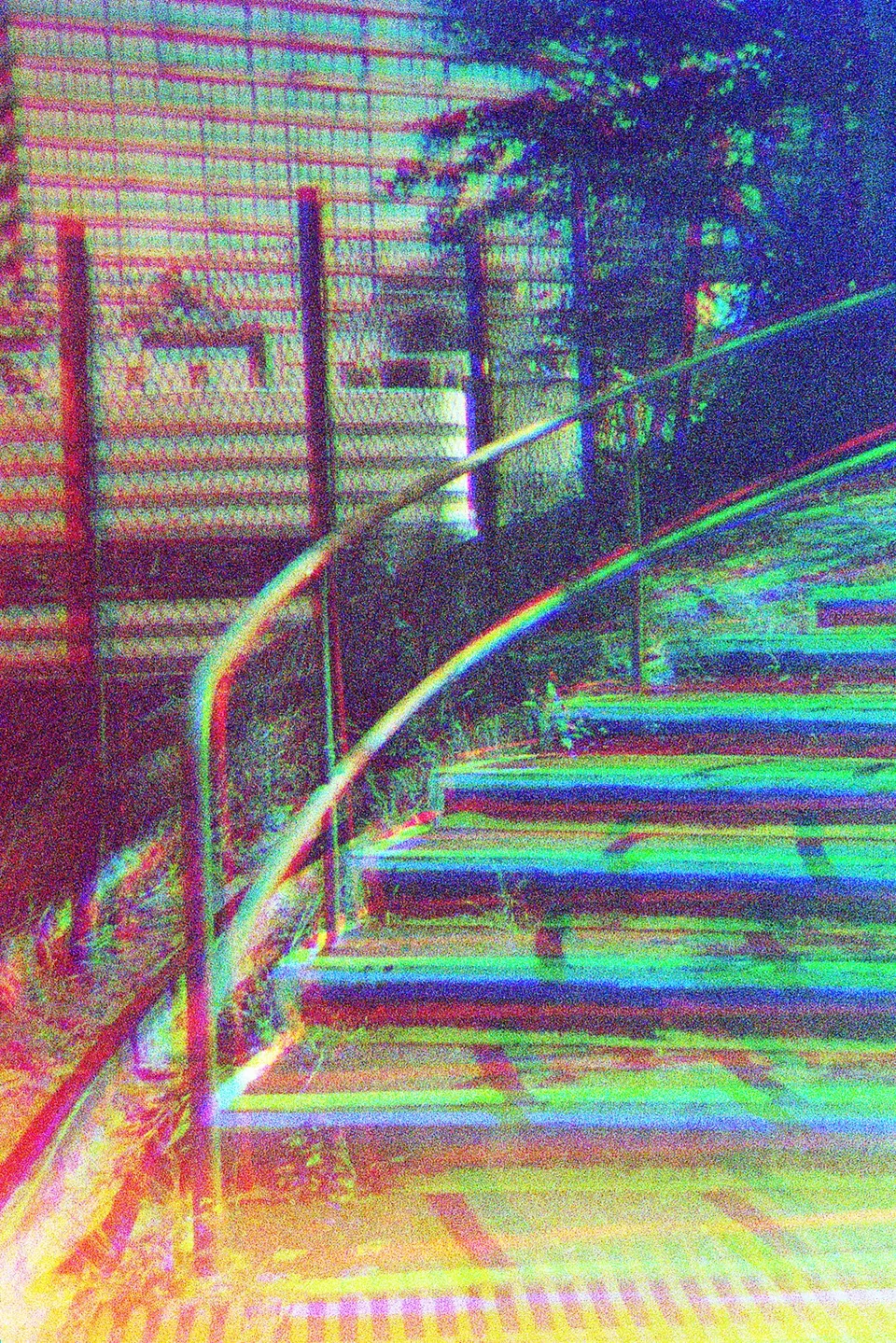
Lastly, prepare you for something more daunting—the fantastic & surreal IR trichrome. (Something I have been preparing to do. I will link to it once I get some results.)
Orthochromatic film vs. Panchromatic film

Even though it's easy to compose a color image from 3 black-and-white filtered image, this wasn't always possible in the early 20th century.
Have you ever thought why old folder cameras have red window to read the frame markings instead of blue, or green, or simply transparent window?
That's because the early black and white film are orthochromatic, meaning they are insensitive to the wavelength of red light. With orthochromatic film, we cannot capture the intensity of the red component because the film isn't sensitive to red light.
Later, with the introduction of panchromatic film sensitive to all visible light wavelengths, it was possible to utilize the trichrome technique to create colorful images. The red window persisted simply by traditions by the manufacturers. There also existed green "red" window on cameras like Rollex 20.
Well, all modern films are panchromatic so not really a problem for any of us. I just found this an interesting fun fact to share.
By the way, cameras with red windows are vulnerable to light leaks even when the red window remains closed, especially when 135 film without paper backing is used.

First attempt: On Agfa Solina
My first attempt on trichrome photography was done using Agfa APX 100 on Agfa Solina. It was on a cloudy day, removing the trouble caused by moving shadows as the sun sets.
Simply placing filter in front of a camera without changing any of the camera setting for different color filter is a wrong way to do this because different filter results in different level of change in light intensity, and trichrome is all about capturing the correct light intensity of each color over the same baseline. This wouldn't be a problem for cameras with through the lens (TTL) metering, except that Solina has no metering whatsoever.
After getting the negatives scanned, the images are stacked manually in GIMP and composed into color images. Color fringing can be observed due to mis-alignment or subtle camera movement while advancing the film during the shoot.
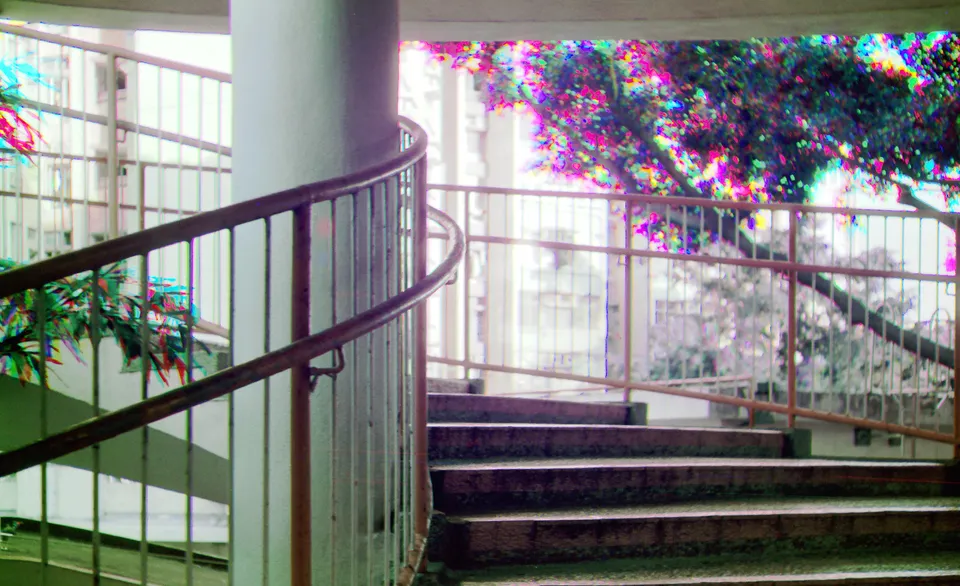
As mentioned, the exposures weren't properly offseted according to the light intensity delta caused by the filters, Therefore, some components of the color image appear unreasonably more intense than it should be. GIMP's auto-white balancing was able to save the situation because there's enough shadow details. In the case of an already dark environment, some details may be beyond saving simply using auto-white balancing. So it's still recommended to step down accordingly for the filter used respectively.
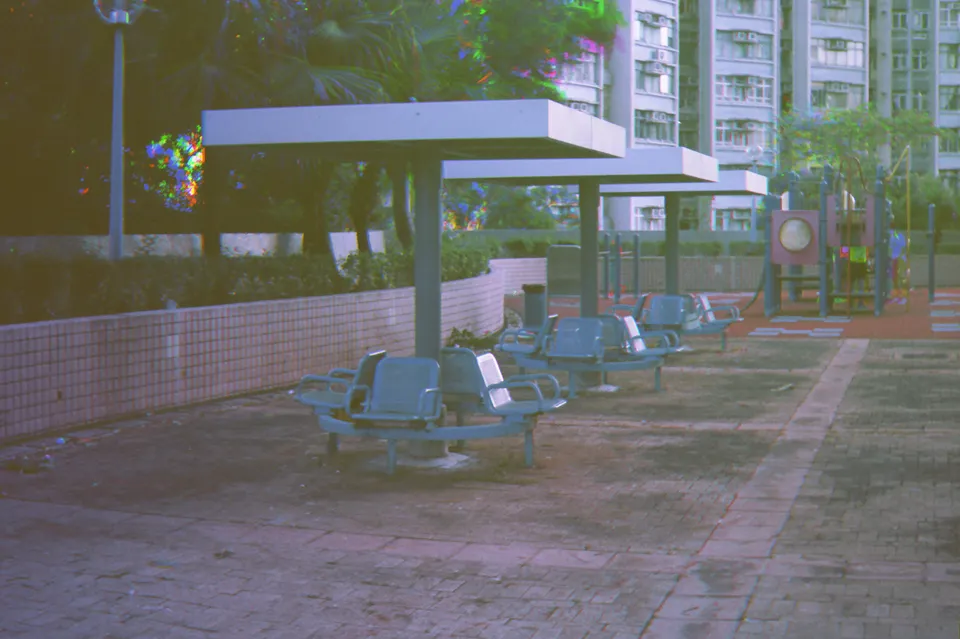
Another shortcoming of this setup was that only static scenar can be reasonably rendered. With moving objects, there's no way to separately capture the 3 different components of the object before it moves out of place…
…unless 3 cameras are in use, or the light coming through the lens is split into 3 using a system of prisms mirrors à la the Bermpohl Naturfarben Kamera. In my second attempt I had tried to address this issue.
Second Attempt: On Sports 35
My first attempt in trichromatic photography revealed the shortcoming of shooting with a single lens where objects in motion cannot be captured. In my second attempt inspired by a setup on Flickr, a multi-lens system is used to capture multiple images in relative short timeframe.
Details about the Sports 35 can be seen in the dedicated gear page. Sports 35 differs from ordinary cameras by having 4 lenses each producing an image on a quadrant of a 35mm frame. Call it a quarter-frame camera if you want. Therefore by sticking flash gel of different colors in front of the lenses I can obtain 3 filtered images 0.2 seconds apart from each other.
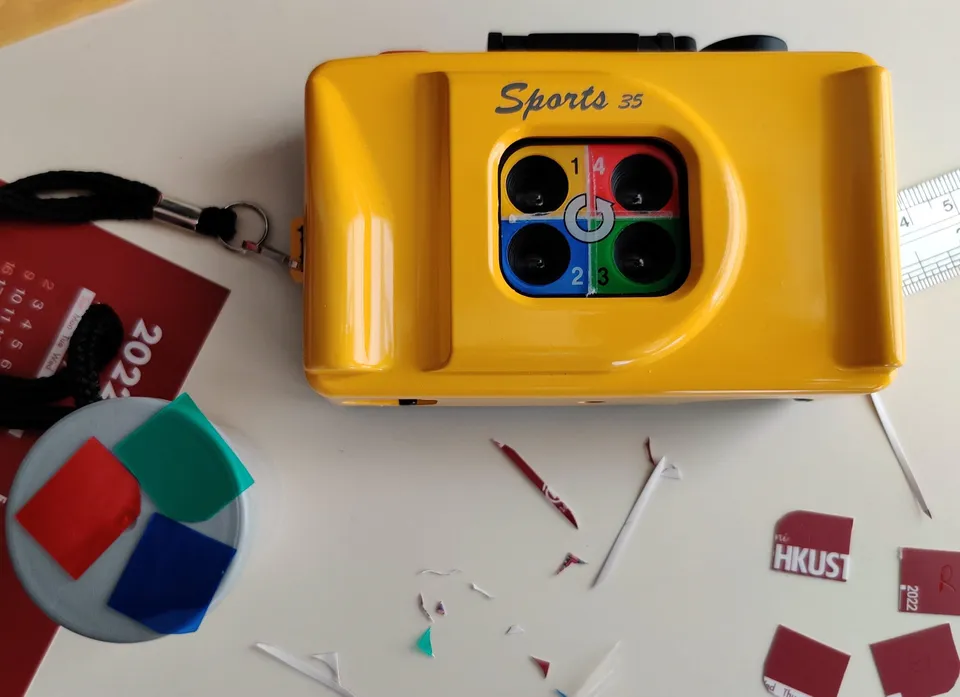
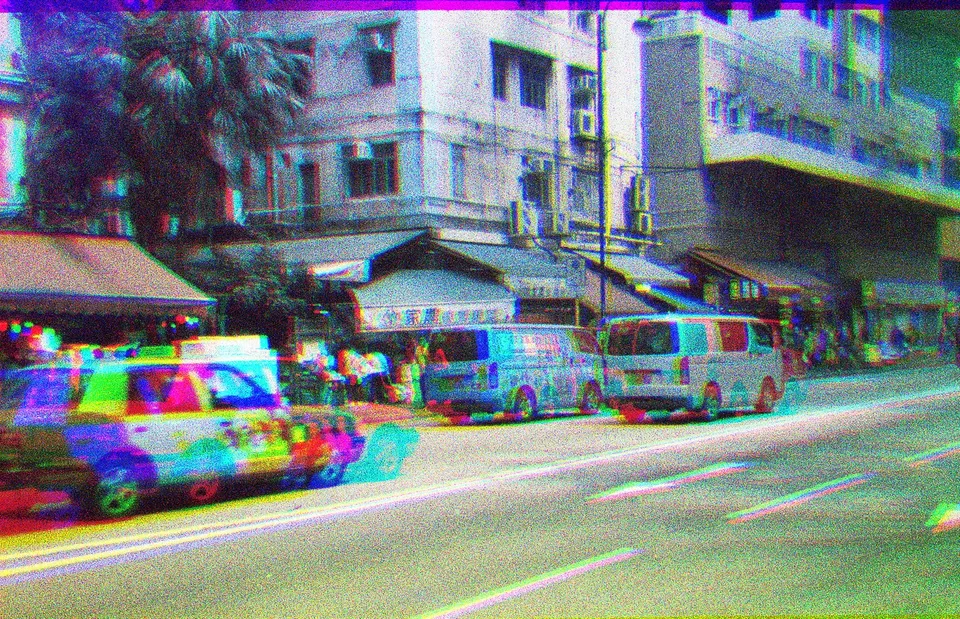
With fixed shutter speed, the difference in light intensity due to filtering can only be corrected in post-processing using auto-white balancing.
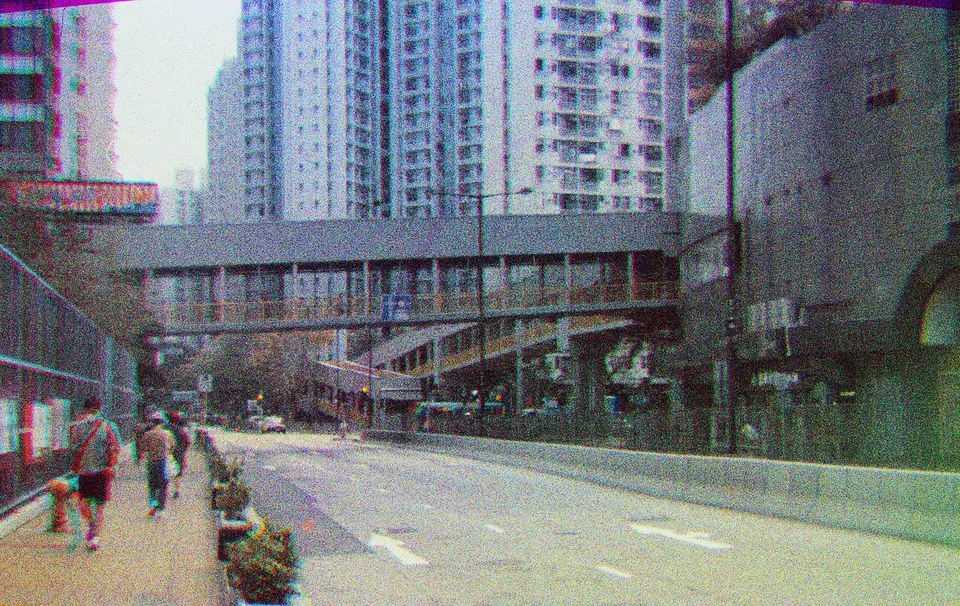
Images of moving vehicles are still out of reach, but foilage on a windless day is satisfying enough. Note that the offsets in lens position caused slight parallex in the images created that are good enough or distant objects yet is quite selective on close distance subjects.
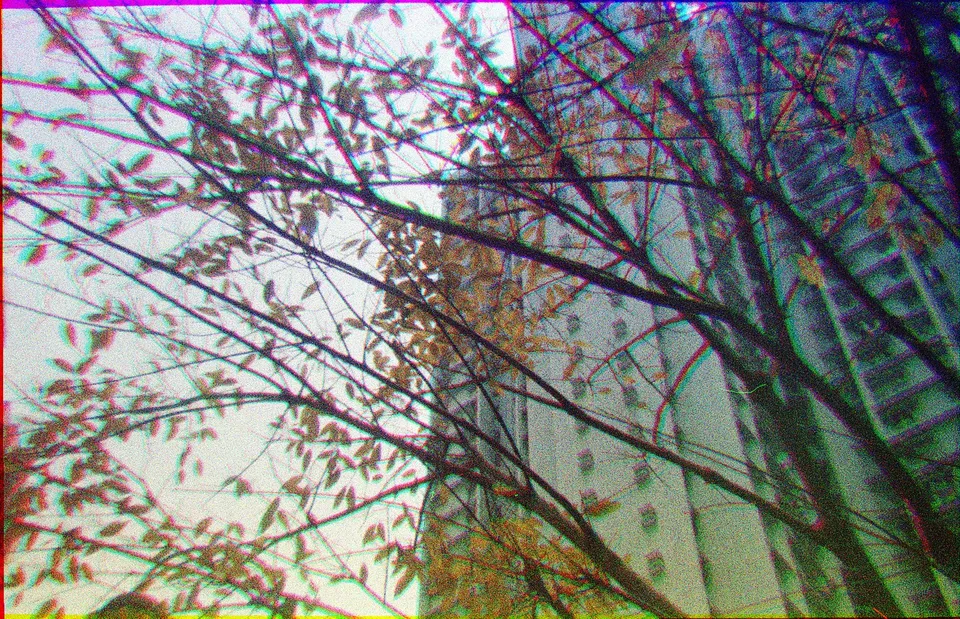
OK there's an adjective to describe this sorry sight: LOMO.
So I could have said
…yet it's quite LOMO close distance subjects.
Sounds good enough.
What's next?
Now that I have got the a bare minimum implementation of trichrome to an OK LOMO result, my next goal is to apply the same technique using an infra-red film, where one color component would be an image of infra-red light instead of visible light component. Say, you can make trees look pink or yellow.
Before that, I probably need a sturdier tripod, a camera with TTL metering (such as Optima 1535 or Bessa R3A), and some Rollei Infrared 400 film.
Bonus: Filter magic to cancel out lens flare
Now we all know that color filter effectively cancels out a certain color (opposite color in color wheel as the filter). For example, using a blue filter eliminates yellow and vice versa.

